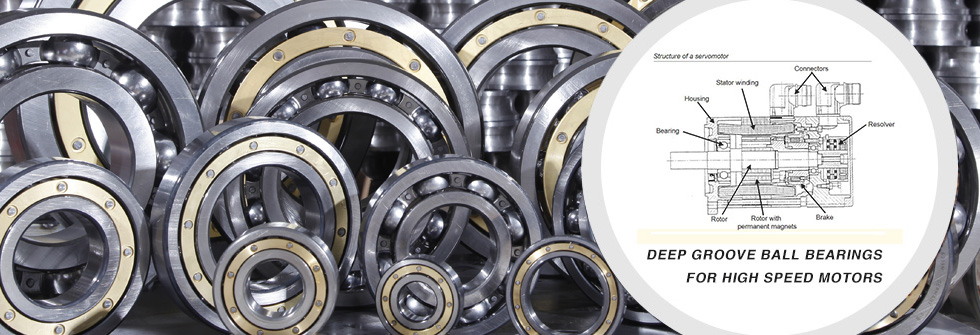Insulating Ball Bearings prevent Electric Arc Damage in Electric Motors
2015-11-20Ball bearings in electric motors support and locate the rotor, keep the air gap small and consistent, and transfer loads from the shaft to the motor frame. When a stray current in a machine uses a bearing as its path to ground, the resulting damage is referred to as electric arc bearing damage. The most common causes of electric arc bearing damage include asymmetry in the motor''s magnetic circuit; unshielded power cables; and fast-switching variable frequency drives (VFDs).
Once electric arc bearing damage has begun, excessive vibrations, increased heat, increased noise levels, and the reduced effectiveness of the lubricant will contribute to shorten a bearing''s service life. The extent of damage to bearings will depend on the amount of energy and its duration. However, the effect usually will be the same: pitting damage to the rollers and raceways, rapid degradation of the lubricant, and premature bearing failure.
Why Arcing Occurs: Electric arcing will result if there is a difference in potential between the shaft and the bearing housing. (Even a difference of a few volts in potential can produce the effect.)
The voltage level when arcing occurs will depend on ball size, cage type, and seal design. For two bearings the same size, arcing occurs at a higher voltage level for the open variant than for the sealed variant. If the bearing is equipped with pressed steel shields, the risk of arcing will be higher, because theinsulating part is only the air gap between the electrically conducting shield and the bearing inner ring.
How Damage Results: When an electric current passes through the contact zone of a bearing''s rolling elements and raceway, the energy of the electric discharge generates heat, causing localized melting of the surface. The effect on a bearing is almost like a series of small lightning strikes, which melt and retemper internal bearing surfaces. The outcome is that some surface material flakes away and spalls out to create noise in the bearing and potentially shortened service life.
Insulating Ball Bearings' key potential benefits to users:
Lower maintenance and energy costs: Maintenance costs can quickly multiply if a bearing must be changed frequently and an extension in the service life of a bearing without increasing maintenance costs can contribute to reductions in the overall operating cost of equipment. Less friction adds up to lower energy costs.
Extended service life: Most bearings are designed into applications based on loading conditions and do not take into account factors such as lubrication, contamination, and maintenance. Without proper attention to these external factors, a steel bearing rarely reaches its optimized design and service life. The properties of ceramics combine to hold the promise of service life up to 10 times that of a standard steel bearing.
Extended grease life: In environments imposing high demands on the bearing lubricant, standard bearings experience surface wear due to insufficient lubricant film and bearings can fail if the initial grease charge is not replenished within an acceptable timeframe. Hybrid bearings run cooler and can operate with thinner lubricant films, so there is less aging of the grease and relubrication intervals can be longer for increased service life compared with standard bearings in the same operating conditions.
Lower operating temperatures: The heat generated in bearings is attributed to viscous friction between the balls and raceways. The source of the loading is both external and internal, and little can be done to reduce the external loads. However, since ceramic balls have only 40% of the density of steel balls, less centrifugal load is generated by the balls and the internal friction is lower. This translates to cooler running for the same operating conditions (or, if applicable, a higher rotational speed while maintaining the same temperature).
Reduced wear from contamination: In contaminated environments solid particles create dents in the rolling surfaces and raised edges around those dents, causing noise and premature wear as steel balls roll over those surfaces. The harder ceramic ball material puts contaminants in their place.
Reduced wear from vibration: In equipment exposed to static vibration there is an inherent risk of false brinelling (wearing away of the surfaces within the ball and raceway contacts), which can eventually lead to spalling and premature failure. Lighter-weight ceramic balls minimize the potential for false brinelling.
Experienced product and service partners can serve as reliable resources to help keep users current about these and other remedial solutions for electric arc bearing damage.











